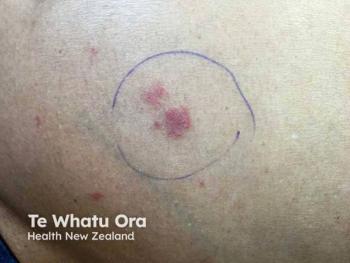
Insights on Topical Ruxolitinib: Rapid Itch Relief and Pediatric Considerations in Atopic Dermatitis
Dermatology experts evaluate topical ruxolitinib cream's effectiveness in rapidly relieving itch and offer guidance on its black box warning. They also discuss its efficacy in children under 2, highlighting its suitability for those with tactile sensitivity.
Episodes in this series

This is a video synopsis of a discussion involving James Del Rosso, DO, dermatologist in Las Vegas, Nevada, Brad Glick, DO, MPH, FAAD, a principal investigator at GSI Clinical Research in South Florida, and Lisa Swanson, MD, FAAD, a dermatologist and pediatric dermatologist in Boise, Idaho.
The panelists address the significance of the FDA approval of topical ruxolitinib for atopic dermatitis (AD), particularly emphasizing its implications for pediatric use. Dr. Del Rosso reflects on the cautious approach of the FDA in light of safety concerns surrounding Janus kinase inhibitors, both oral and topical. However, he notes that the absence of reported adverse events related to systemic absorption of topical ruxolitinib is reassuring, indicating a favorable safety profile.
Dr. Glick echoes this sentiment, highlighting the real-world data supporting the safety and efficacy of topical ruxolitinib, especially in pediatric patients. He emphasizes the importance of adherence to recommended body surface area (BSA) percentages for treatment to mitigate any potential risks. Dr. Swanson adds that the FDA's approval of topical ruxolitinib for use in children aged 2 to 11 signifies a significant milestone and eagerly anticipates further expansion of its indications.
Moreover, the panelists discuss the appropriate strength and duration of topical ruxolitinib treatment, advocating for the use of the higher strengths (1% or 1.5%) based on clinical efficacy data. They reassure patients about the safety of the medication, emphasizing its topical application and low systemic absorption levels.
Overall, the panelists emphasize the groundbreaking nature of topical ruxolitinib as a therapeutic option for AD, highlighting its safety, efficacy, and potential to revolutionize treatment paradigms for both adults and pediatric patients.
Video synopsis is AI-generated and reviewed by Dermatology Times® editorial staff.
Newsletter
Like what you’re reading? Subscribe to Dermatology Times for weekly updates on therapies, innovations, and real-world practice tips.






















